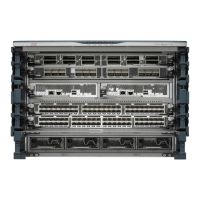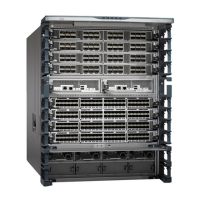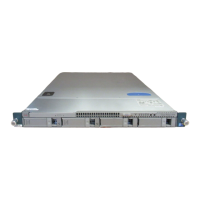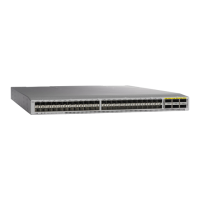Send document comments to nexus7k-docfeedback@cisco.com.
7-5
Cisco Nexus 7000 Series NX-OS Unicast Routing Configuration Guide, Release 4.x
OL-20002-02
Chapter 7 Configuring OSPFv3
Information About OSPFv3
Areas
You can limit the CPU and memory requirements that OSPFv3 puts on the routers by dividing an
OSPFv3 network into areas. An area is a logical division of routers and links within an OSPFv3 domain
that creates separate subdomains. LSA flooding is contained within an area, and the link-state database
is limited to links within the area. You can assign an area ID to the interfaces within the defined area.
The Area ID is a 32-bit value that can be expressed as a number or in dotted decimal notation, such as
10.2.3.1.
Cisco NX-OS always displays the area in dotted decimal notation.
If you define more than one area in an OSPFv3 network, you must also define the backbone area, which
has the reserved area ID of 0. If you have more than one area, then one or more routers become area
border routers (ABRs). An ABR connects to both the backbone area and at least one other defined area
(see Figure 7-2).
Figure 7-2 OSPFv3 Areas
The ABR has a separate link-state database for each area which it connects to. The ABR sends Inter-Area
Prefix (type 3) LSAs (see the “Route Summarization” section on page 7-10) from one connected area to
the backbone area. The backbone area sends summarized information about one area to another area. In
Figure 7-2, Area 0 sends summarized information about Area 5 to Area 3.
OSPFv3 defines one other router type: the autonomous system boundary router (ASBR). This router
connects an OSPFv3 area to another autonomous system. An autonomous system is a network controlled
by a single technical administration entity. OSPFv3 can redistribute its routing information into another
autonomous system or receive redistributed routes from another autonomous system. For more
information, see “Advanced Features” section on page 7-8.
Link-State Advertisement
OSPFv3 uses link-state advertisements (LSAs) to build its routing table.
This section includes the following topics:
ABR1
ABR2
Area 0
Area 3
Area 5
182983
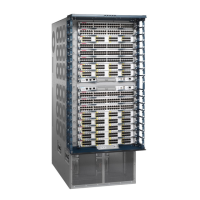
